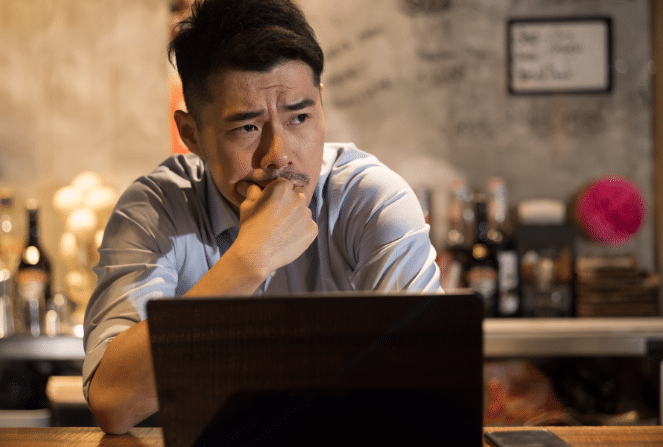In case you haven’t heard: ghost kitchens are kind of having a moment.
Also called virtual, cloud, delivery-only, shadow, and dark kitchens, ghost kitchens are a relatively new concept that emerged in the past year or two. But in 2020 — thanks, in large part, to COVID — they’ve become a legitimate and even preferred alternative to starting up a full-fledged restaurant.
Here’s the lowdown on ghost kitchens: what they are, why they’re gaining momentum, and four basic steps to launching your own ghost kitchen.
What’s a ghost kitchen?
Ghost kitchens are essentially restaurants without the dining space. Their focus is to sell and fulfill online food orders for delivery using third-party apps like Grubhub, UberEats, and DoorDash, or with their own delivery operation. As a result, they typically have no visible storefront.
Because the concept is still evolving, there isn’t a hard-and-fast definition of a ghost kitchen.(It’s also worth noting that the industry hasn’t landed on consistent terminology, so phrases that fall under the “ghost kitchen” umbrella — e.g., virtual restaurants — could mean slightly different things, depending on who you ask.) With that being said, there are a few common ways ghost kitchens can be structured.
- Using a shared commissary spaces
These ghost kitchen facilities that are not located within a restaurant, so they’re strictly for delivery-only purposes. Several independent brands may use a shared kitchen facility simultaneously, or there may be multiple in-house brands developed and operated by a single management team.
- Launching virtual “spin-off” brands
Some dine-in restaurants are launching virtual, delivery-only restaurants, and they’re leveraging their current kitchens to do so. As an example: Chicago-based Frato’s Pizza has always made and served pizza to dine-in customers. But recently, the owner has launched four “spin-off” restaurants from the same kitchen, including a milkshake concept and a grilled-cheese concept. While Frato’s continues business as usual, the four virtual restaurants operate as delivery-only.
- Renting out restaurant kitchens
Another trend we’re seeing: some restaurants are renting out their own kitchens to accommodate ghost kitchen brands that need space and equipment, creating an additional revenue stream for establishments that may be experiencing lower volume due to Covid.
Why ghost kitchens are appealing in 2020
Ghost kitchens are gaining traction quickly in 2020 for a myriad of reasons — with Covid leading the pack.
Even in pre-pandemic times, the average American orders out at least once a week, while more than 20% of Generation Z gets delivery more than three times a week. Those numbers are only going up as a result of Covid. Plus, restaurants are operating at reduced capacity, and patrons are more cautious about dining out. Ghost kitchens are a way that restaurants can take advantage of the boom in delivery orders without losing money on unused dining space (and all the costs that come with keeping it up).
Another factor driving the ghost kitchen trend is the rise of the gig economy, in which ghost kitchens can hire freelancers to make deliveries at a fraction of the cost of third-party apps like GrubHub, UberEats, and Postmates.
Rising real estate prices are also contributing to this trend. Why pay tens of thousands of dollars to open up a dine-in experience when you can rent out a much smaller space and hire delivery drivers for much cheaper?
Pros and cons of ghost kitchens
Here are a few of the pros and cons that both restaurant owners and their customers can expect from ghost kitchens.
Pros
- Low overhead: As we mentioned above, not only is real estate often cheaper, but ghost restaurants don’t have to invest in the costs of hosting a dine-in experience like furniture, decor, and menu printing costs.
- Faster opening times: Ghost kitchens can simply rent out space in existing facilities, so time-to-launch is dramatically decreased.
- Convenience: Delivery-only makes it easy for customers to enjoy restaurant-quality food, especially during the pandemic.
- Additional revenue streams: Established restaurants have the opportunity to generate additional revenue by renting out extra kitchen space to third-party ghost kitchen brands, or by launching delivery-only spin-offs from their own kitchen.
- Flexibility: Ghost kitchens can adapt quickly as market conditions or customer preferences change.
Cons
- Additional costs: If you’re an established restaurant adding on a virtual brand, there is an up-front investment involved, should you decide against running your own delivery operation.
- Lower-quality customer experience: In the hospitality industry, building customer relationships and loyalty is all about experience. That’s harder to control when you’re running a ghost kitchen.
- Brand awareness challenges: Though online visibility can help a restaurant, it also has to compete with the hundreds of other restaurant brands that can be found online. And because they all deliver, this means differentiators (like a prime location) won’t necessarily play into a customer’s decision.
4 basic steps to setting up a ghost kitchen
Interested in setting up your own ghost kitchen? While it’s simpler, in some ways, than setting up a traditional restaurant, it’s also a relatively new concept — which means there’s a lot of uncharted territory. Here are four things to do if you’re considering launching a ghost kitchen.
- Do your research: There aren’t a lot of templates for starting up a ghost kitchen, so you may have to get creative when you’re looking for resources. Seek out advice from teams who have been there, done that and learn from their successes (and mistakes).
- Define your concept: You don’t have to worry as much about location and ambience, which means your menu is really going to be the star of the show. Who are you competing against? How will you stand out? How will you make your food to-go friendly?
- Find your space: When considering where to set up shop, so to speak, location may not matter as much since customers won’t be coming to you. But you do need to think about spaces that are suitable for cooking, whether it’s an existing kitchen space that you rent, a shared space, or your own facility. And if there are going to be multiple vendors using your space, is there ample room for comfortable cooking conditions and the supplies you need to start operation? You’ll also need to think about insurance coverage and safety inspections, among other things.
- Create a marketing plan: Once your concept and brand are established, you need to form a marketing plan with a heavy digital focus. Social media, digital ads, and a polished website will all help with this effort.
If you’ve got your heart set on launching a restaurant but are worried about the up-front investment — or if you’re in the business but want to give a new concept a spin: the ghost kitchen model just might be for you.







